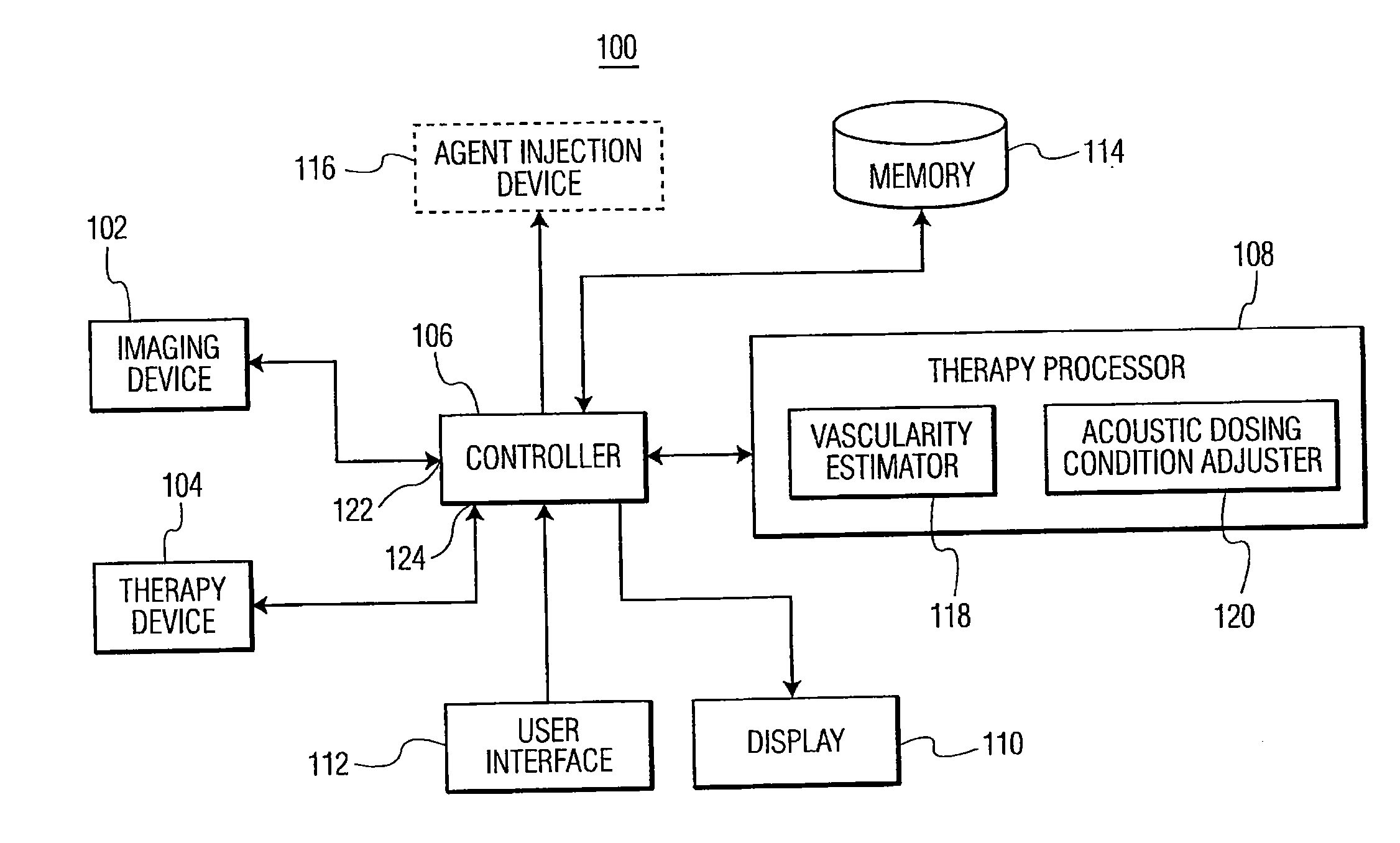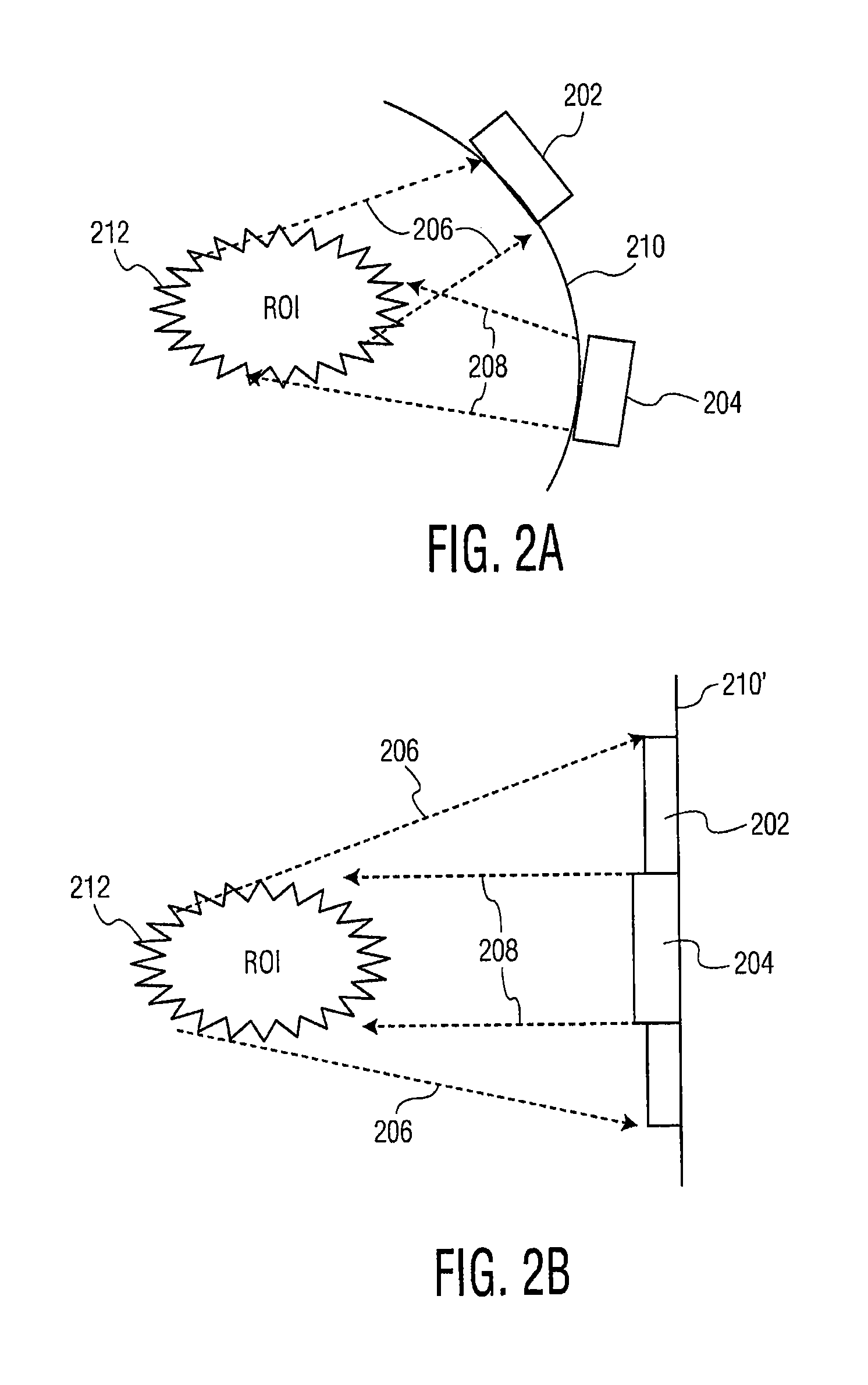Methods and systems for image-guided treatment of blood vessels
a technology of image-guided treatment and blood vessels, which is applied in the field of ultrasound imaging and therapy, can solve the problems of difficult to obtain an objective measure indicating the completeness of the therapeutic treatment, and difficult to evaluate the extent of the applied therapeutic treatment, so as to achieve general applicability, avoid side effects and/or drug resistance, and limit blood flow
- Summary
- Abstract
- Description
- Claims
- Application Information
AI Technical Summary
Benefits of technology
Problems solved by technology
Method used
Image
Examples
example 1
Effect of Antivascular Therapy on Survival Time
[0099]To determine whether the antivascular effects of ultrasound improve the survival rate, thirteen animals with melanoma implanted subcutaneously were studied. The animals were randomly divided into two groups: a control group and a test group. In the test group, 8 animals received one 3 minute treatment with 3 MHz ultrasound at 2.3 W / cm2. In the control group, the remaining 5 animals did not receive any treatment. The growth of tumors in all the animals was determined by measuring the tumor size with ultrasound imaging. The size was measured approximately every two days. The time to reach tumor size of 3 ml was used as the endpoint for the survival time.
[0100]The volume (mean±standard deviation) of the tumor on the treatment day for the control and test groups was 873±386 mm3, and 700±211 mm3. A two tailed Student's t-test showed the difference in volume for the two groups to not be significant (p≦0.394).
[0101]Acute change in tumor ...
example 2
Effectiveness of Antivascular Ultrasound Therapy
[0103]Longitudinal studies in mice with implanted tumors were performed to evaluate the effectiveness of antivascular ultrasound therapy. The animal studies were performed in 32 mice (6 to 8 weeks of age; C3HV / HeN strain), randomly placed into treated (n=15) or control (n=17) groups. In each mouse two million murine melanoma cells (K173522) were injected subcutaneously in the right flank. About a week later the mouse was anesthetized with isoflurane and oxygen, and the hair coat overlying the injection site was removed by clipping and applying a depilation cream. As soon as the tumor was visually detected, the mouse was re-anesthetized and a B-mode ultrasound examination was performed (7-15 MHz broad-band probe). In each of two orthogonal B-mode images, the length (L), width (W) and depth (D) of the tumor was measured and its volume (ml) was calculated by the formula V=0.5 LWD, where D was measured in the two image planes and averaged....
example 3
Numerical Simulation of Ultrasound Heating in the Presence of Microbubbles
[0113]As discussed above, microbubbles may enhance the thermal effects of ultrasound therapy and may have a dominant role in disrupting the tumor neovasculature. In this example, computer simulations are performed, to assess the role of microbubbles in enhancing tissue heating. Because blood perfusion rate, heating rate (the product of ultrasound intensity and sonication time) and sonication frequency may be related to the thermal dose delivery, their potential roles are also studied. The approach, in this example, is to vary each of the parameters systematically and evaluate the heating response.
[0114]Heat deposition by oscillating microbubbles is a function of their equilibrium radius and the incident sonication frequency. In this example, the equilibrium radii of a contrast agent present in an animal's blood pool is modeled to be distributed over a range of values described by a probability density function...
PUM
 Login to View More
Login to View More Abstract
Description
Claims
Application Information
 Login to View More
Login to View More - R&D
- Intellectual Property
- Life Sciences
- Materials
- Tech Scout
- Unparalleled Data Quality
- Higher Quality Content
- 60% Fewer Hallucinations
Browse by: Latest US Patents, China's latest patents, Technical Efficacy Thesaurus, Application Domain, Technology Topic, Popular Technical Reports.
© 2025 PatSnap. All rights reserved.Legal|Privacy policy|Modern Slavery Act Transparency Statement|Sitemap|About US| Contact US: help@patsnap.com



